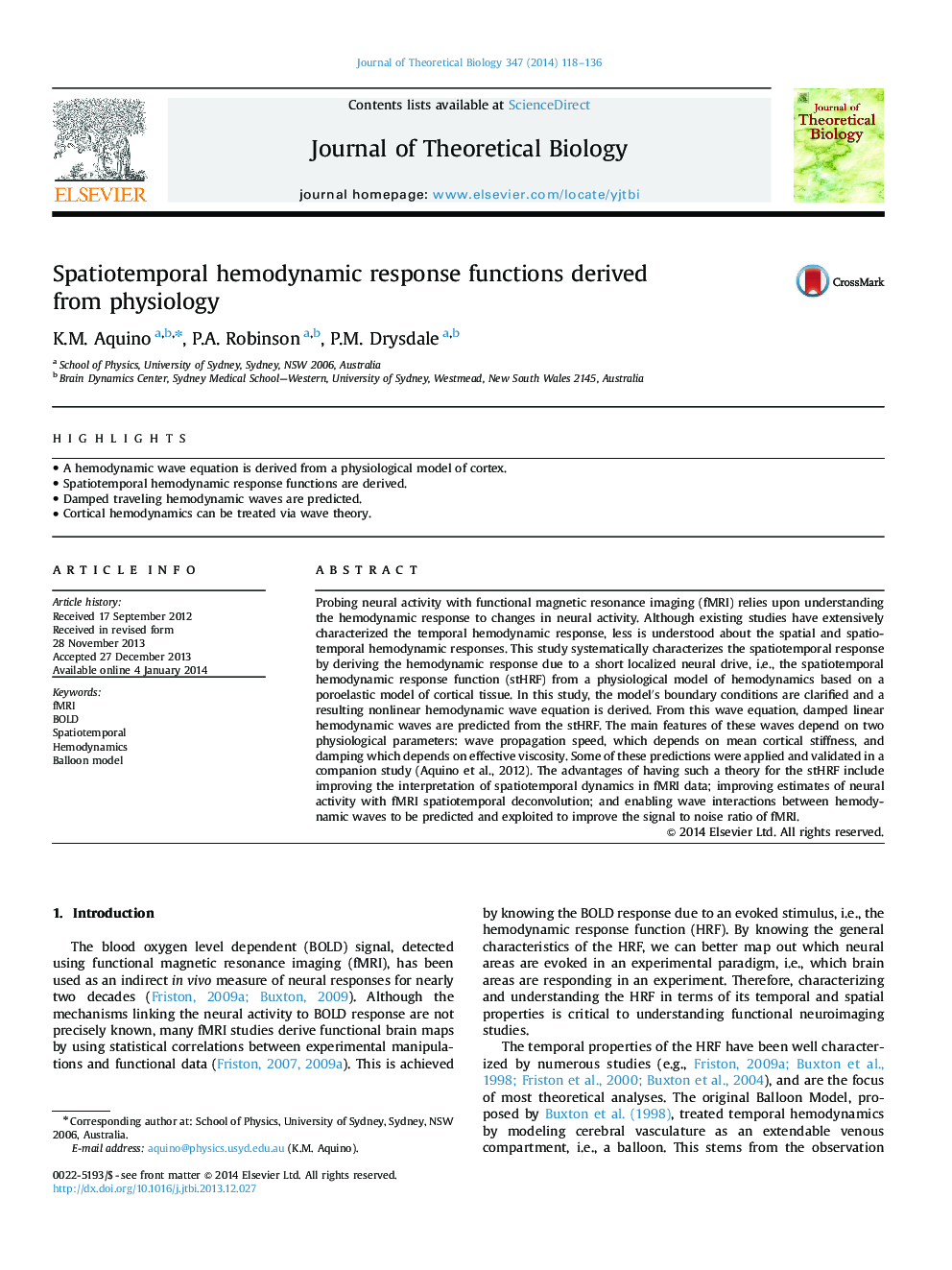| کد مقاله | کد نشریه | سال انتشار | مقاله انگلیسی | نسخه تمام متن |
|---|---|---|---|---|
| 6370605 | 1623863 | 2014 | 19 صفحه PDF | دانلود رایگان |

- A hemodynamic wave equation is derived from a physiological model of cortex.
- Spatiotemporal hemodynamic response functions are derived.
- Damped traveling hemodynamic waves are predicted.
- Cortical hemodynamics can be treated via wave theory.
Probing neural activity with functional magnetic resonance imaging (fMRI) relies upon understanding the hemodynamic response to changes in neural activity. Although existing studies have extensively characterized the temporal hemodynamic response, less is understood about the spatial and spatiotemporal hemodynamic responses. This study systematically characterizes the spatiotemporal response by deriving the hemodynamic response due to a short localized neural drive, i.e., the spatiotemporal hemodynamic response function (stHRF) from a physiological model of hemodynamics based on a poroelastic model of cortical tissue. In this study, the model's boundary conditions are clarified and a resulting nonlinear hemodynamic wave equation is derived. From this wave equation, damped linear hemodynamic waves are predicted from the stHRF. The main features of these waves depend on two physiological parameters: wave propagation speed, which depends on mean cortical stiffness, and damping which depends on effective viscosity. Some of these predictions were applied and validated in a companion study (Aquino et al., 2012). The advantages of having such a theory for the stHRF include improving the interpretation of spatiotemporal dynamics in fMRI data; improving estimates of neural activity with fMRI spatiotemporal deconvolution; and enabling wave interactions between hemodynamic waves to be predicted and exploited to improve the signal to noise ratio of fMRI.
Journal: Journal of Theoretical Biology - Volume 347, 21 April 2014, Pages 118-136